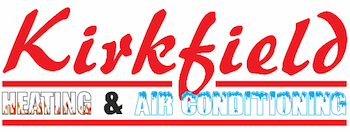
You shouldn’t need to sacrifice comfort or spend a lot to keep your home at the right temperature during warm days.
But what is the right temperature, exactly? We discuss recommendations from energy experts so you can choose the best temperature for your home.
Here’s what we recommend for the most energy-efficient setting for air conditioning in Winnipeg.
Recommended Thermostat Settings for Summer
Most households find using the thermostat at 72-73 degrees is most comfortable. However, if there’s a sizeable difference between your interior and exterior temperatures, your AC costs will be larger.
These are our suggestions based on the U.S. Department of Energy (DOE) and ENERGY STAR®.
While at home: 78 degrees. While that appears warm, there are methods you can keep your house refreshing without having the air conditioning on constantly.
Keeping windows and curtains closed during the day keeps cold air where it should be—indoors. Some window solutions, like honeycomb shades or plantation shutters, are created to provide added insulation and improved energy savings.
If you have ceiling fans in your home, the DOE says you can raise thermostat temperatures about 4 degrees hotter without sacrificing comfort. That’s because they refresh through a windchill effect. Since they cool people, not spaces, shut them off when you leave a room.
If 78 degrees still appears too uncomfortable on the surface, try running an experiment for about a week. Start by upping your setting to 78 degrees while you’re at your residence. Then, progressively lower it while following the suggestions above. You may be shocked at how refreshed you feel at a higher temperature setting.
While away: 88 degrees. There’s no need to keep the AC going all day while your house is vacant. Switching the temperature 7–10 degrees warmer can save you as much as 5–15% on your electricity expenses, according to the DOE.
When you get home, don’t be tempted to put your thermostat under 78 to cool your residence more quickly. This isn’t effective and usually produces a bigger electrical expense.
A programmable thermostat is a good approach to keep your settings under control, but it requires setting programs. If you don’t utilize programs, you run the risk of forgetting to change the set temperature when you go.
If you want a handy solution, think over buying a smart thermostat. This thermostat links with your phone, so it is aware when you’re at your house and when you’re away. Then it instinctively changes temperature settings for maximum savings. How much exactly? An estimated $180 annually on heating and cooling, according to ENERGY STAR.
Another perk of getting a smart thermostat? You can use your phone to monitor and adjust temperature settings from just about anywhere.
While sleeping: Around 70 degrees. While ENERGY STAR advises 82 degrees, that could be unpleasant for the majority of families. Most people sleep better when their sleeping space is chilly, so that’s why the National Sleep Foundation suggests 60–67 degrees. But that may be too chilly, depending on your clothing and blanket preference.
We recommend running an equivalent test over a week, putting your temperature higher and slowly turning it down to determine the ideal temperature for your house. On cool nights, you might learn keeping windows open at night and relying on a ceiling fan is a superior idea than running the air conditioner.
More Ways to Conserve Energy During Warm Weather
There are other ways you can spend less money on utility bills throughout the summer.
- Install an energy-efficient air conditioning system. Central air conditioners only work for about 12–15 years and get less efficient as they get older. An updated air conditioner can keep your home cooler while keeping electricity bills low.
- Set regular air conditioner tune-ups. Routine air conditioner maintenance keeps your system working like it should and could help it operate at greater efficiency. It can also help prolong its life span, since it enables professionals to discover little problems before they cause a major meltdown.
- Put in new air filters often. Read manufacturer instructions for changing your air filter. A dirty filter can result in your system short cycling, or run too often, and drive up your cooling.
- Measure attic insulation levels. Almost 90% of residences in the U.S. don’t have proper insulation, according to the Insulation Institute. The majority of southern climates should have 13–14” of attic insulation, while northern climates need 16–18”.
- Have your ductwork checked. Ductwork that has loosened over time can leak cold air into your attic, walls or crawl space. This can result in huge comfort problems in your house, such as hot and cold spots.
- Seal holes, doors and windows. Keep warm air where it belongs by plugging cracks. You can also caulk or weather strip doors to keep more conditioned air inside.
Conserve More Energy This Summer with Kirkfield Heating & Air Conditioning
If you want to use less energy during warm weather, our Kirkfield Heating & Air Conditioning pros can help. Get in touch with us at 204-272-8128 or contact us online for more info about our energy-saving cooling products.




